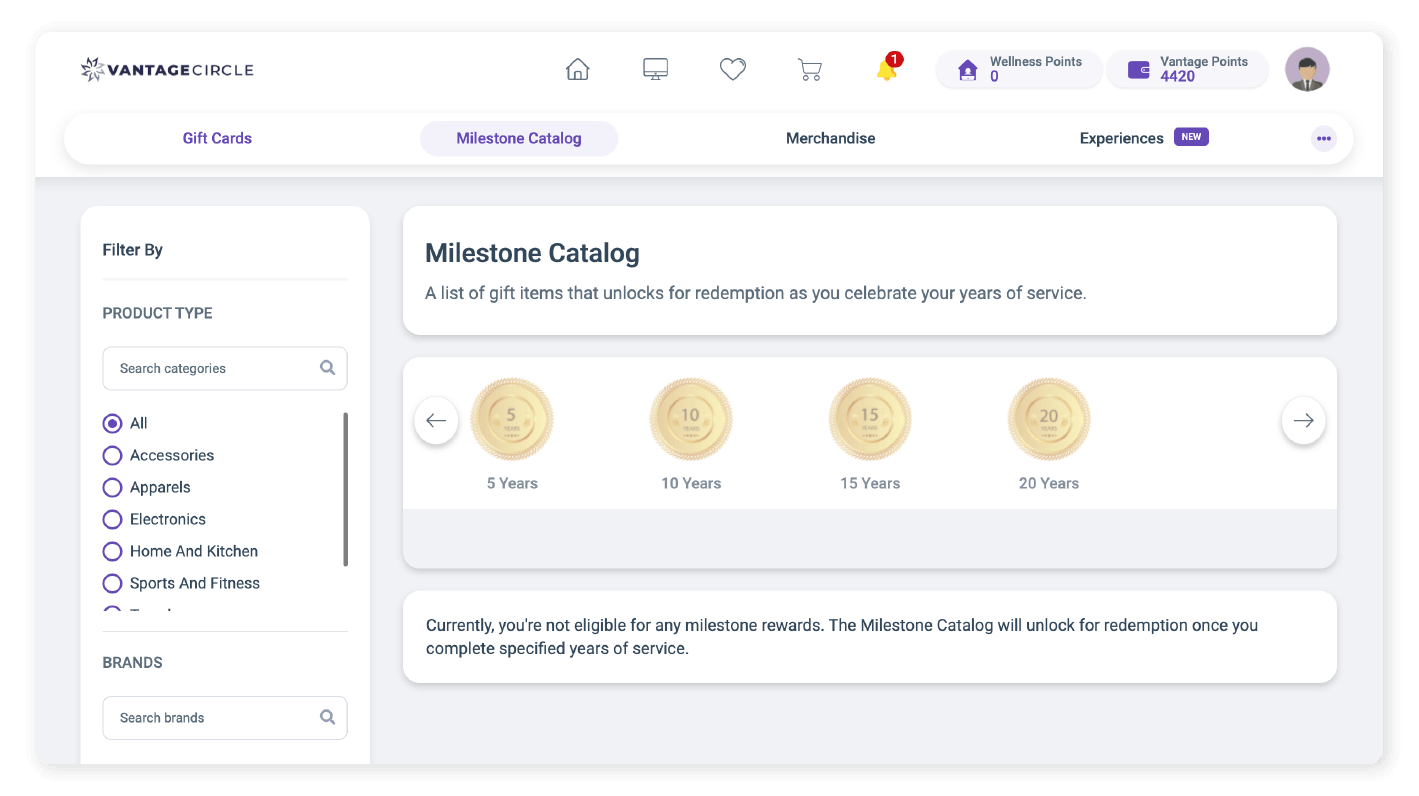Employee Tenure: Meaning, Types, and Benefits
If we consider its definition, employee tenure denotes the duration an individual spends working within a particular organization. However, beyond its technicality, employee tenure embodies stories of loyalty, growth, challenges, and resilience. In every organization, these stories shape its culture and define its success.
Let’s go deeper into understanding the concept of employee tenure- its types, benefits, and challenges.
However, before exploring the finer points of Employee tenure, let's get to the basics first.
Meaning Of Employee Tenure
Employee tenure is the time an employee spends working for one company before moving on to another.
In other words, employee tenure is the average length of time your current workers have been with the company.
And, Who Is A Tenured Employee?
A tenured employee is someone a business or organization has employed for several years. Workers with longer tenure are those with a company for over five years, while those with shorter tenure are those with the organization for less time. They tend to be indicators of employee satisfaction and are frequently seen as loyal.
Long-tenured staff members are frequently appreciated for their ability to blend in with the company culture and their deep knowledge of the rules and procedures, both of which boost output.
In certain nations, there is a type of academic appointment called academic tenure. Such appointments are unrenewable and can only be ended for good reasons or in exceptional circumstances. Program discontinuance or severe financial hardship could be one of those reasons.
How To Calculate Employee Tenure?
To find employee tenure, we divide the total years worked by all employees by the number of employees in the company. That is-
Tenure = Duration / Employees
But tenure is definitely more than just the time spent. It stands for the foundational growth, cultivated relationships, and honed abilities of individuals who have shown consistent dedication.
Now that we've established employee tenure, let's categorize it based on duration.
Differences between Short-Tenured and Long-Tenured Employees
| Short-Tenured Employees | Long-Tenured Employees |
|---|---|
| If your employees have worked for less than five years, they are short-tenured. | Those who have worked for over five years are long-tenured. |
| Short-tenured employees inject new ideas, skills, and energy. | However, long-tenured employees have seen ups and downs, which gives them a deeper perspective, wisdom, and contextual knowledge. |
| They need help forming internal and external connections. | Older employees had enough time to build strong internal networks and client relationships. |
| Recent hires typically start with lesser compensation but are more likely to move up the pay-scale ladder. | Given their experience, extended-tenure employees often move higher in pay bands. |
What Are The Benefits Of Employee Tenure?
The advantages of longer employee tenure go beyond just the years they have worked there. They form deeper connections, creating a symbiotic relationship where individuals and the organization flourish.
Key Benefits of Long Employee Tenure For Employers
1. Great Retention Rate
Long tenure indicates you have a great employee retention strategy. It also means you are saving the costs of repeatedly recruiting and training new hires.
2. Brilliant Culture
Long tenure signals that you have a great company culture. There is a good likelihood that you have, up to this point, understood the expected behaviors and values.
3. Institutional Asset
Longer-serving employees are your most competitive asset. They have accumulated the invaluable institutional knowledge and expertise that takes years to build.
4. Expert Mentorship
Longer-tenured staff share their knowledge through mentoring newer employees as "experts" within the organization. As mentors, they serve as a bridge between established practices and fresh ideas, fostering a harmonious blend of tradition and innovation.
Read our blog on: 6 Ways To Enhance Coaching Culture In Your Organization
5. Engagement
A lengthy history of employee tenure frequently indicates that you excel in various aspects of employee engagement. It signifies your success in effectively managing rewards and recognition, ensuring work-life balance, and maintaining a foundation of trust in the workplace.
6. Loyalty
Undoubtedly, lengthy tenure is the breeding ground for employee loyalty and advocacy for the brand. Tenured employees are likelier to refer the company to their friends and family.
7. Succession
Employees with longer tenure offer a pool of qualified succession candidates for management roles as internal promotions.
Understanding these dynamics allows HR to maximize the value of long-serving employees through tailored programs and initiatives.
It's also intriguing to note that the benefits of employee tenure aren't solely confined to the organization. Rather, they also extend to the individuals comprising the workforce.
Key Benefits of Long Employee Tenure For Employees
1. Financial Stability
Tenure provides financial stability by leveraging the efficiency of experienced workers, reducing the company's training costs. Employees with a longer tenure tend to understand better, resulting in higher productivity and cost savings. This financial interest in tenure encourages employers to invest in retaining experienced staff, benefiting both parties in the long run.
2. Job Security
Companies often value the institutional knowledge and expertise that tenured employees bring to the table. Thereby, making them less susceptible to layoffs. This sense of security allows employees to focus on their work and contribute more effectively to the organization's success.
3. Acclimation Skills
As employees spend more time in their positions, they become increasingly familiar with the company's processes, systems, and expectations. This familiarity enables them to adapt more quickly to changes and navigate complex situations with confidence. Thus, longer tenure facilitates the development of acclimation skills.
4. Non-monetary Benefits
Companies often recognize the value of retaining experienced staff and offer additional perks to reward their loyalty and dedication. Such non-monetary benefits include:
- improved work-life balance,
- flexible scheduling, and
- a supportive work culture, fostering greater job satisfaction and well-being.
These benefits contribute to a positive work environment and help employees balance their professional and personal lives.
5. Long Time Service Benefits
Employee tenure unlocks access to long-term service benefits like:
- increased paid time off,
- retirement plans, and
- recognition programs ,
- additional employee perks and benefits, and
- thoughtful gifts that incentivize loyalty and dedication to the organization.
Introducing a "milestone catalog" could be an excellent way to enhance this culture of recognition and specifically, gifting. But what exactly is a "milestone catalog"?
The "Milestone Catalog" is a collection of gift options available to employees who achieve significant service milestones within the organization.

For example, when an employee reaches their fifth anniversary with our company, they will gain access to the "5 Years Catalog." This special catalog offers a range of gift choices, including electronics, gadgets, fashion items, cookware, and more. These options help them commemorate their years of tenure meaningfully.
Know more here: Marking The Moment: 9 Special Ways To Celebrate Employee Milestones
All of the above benefits reinforce employees' sense of value and belonging within the organization, strengthening their commitment and motivation to succeed.
Challenges Of Employee Tenure
While loyalty and experience are valuable, prolonged tenure can lead to challenges that affect both parties. Let's delve into the complexities that arise for employees and employers as tenure extends within an organization.
Challenges For Employees
-
Stagnation and Complacency
Sometimes, staying in the same job for a long time can make people feel too comfortable and stop trying to improve. -
Outdated Skills
If you stay in one job for a long time, you might not learn new things that are important for different jobs. -
Limited Career Opportunities
When you work in the same place for many years, you might miss chances to try new jobs or advance your career. -
Resistance to Change
After working in one place for a long time, it can be hard to accept new ways of doing things.
Challenges For Employers
-
Higher Compensation Costs
When people work at a company for a long time, they usually get paid more, which can make it expensive for the company. -
Entrenched Culture
When people stay at a company for a long time, they get used to doing things in a certain way, and it can be hard to change. -
Lack of Fresh Perspectives
If everyone has been working at a company for a long time, they might not think of new ideas because they haven't seen different ways of doing things. -
Succession Planning Issues
Sometimes, if employees have been at a company for a long time, it's hard to find new people to replace them.
Is There A Magic Tenure Number?
There isn't a definitive 'magic' tenure number. However, according to the U.S. Bureau of Labor, in 2022, the average employee tenure was 4.1 years in the US.
However, this can fluctuate across industries. For instance, tech sectors often witness more frequent job changes. On the other hand, universities commonly feature faculty members with extensive tenures.
Industry-specific data on employee tenure
Generally, tenure varies by age: 9.8 years for those aged 55-64 and 2.8 years for those aged 25-34. Over the past decade, however, there's been a decline in average tenure.
Let’s examine this trend across private and public sectors.
Employee tenure in private sectors
| Industry | 2018 | 2020 | 2022 |
|---|---|---|---|
| Private sector average | 3.8 | 3.7 | 3.7 |
| Agriculture and related industries | 4.6 | 3.5 | 4.7 |
| Nonagricultural industries | 3.8 | 3.7 | 3.7 |
| Mining, quarrying, and oil and gas extraction | 5.1 | 4.6 | 5.2 |
| Construction | 4.1 | 4.0 | 3.9 |
| Manufacturing | 5.0 | 5.1 | 5.2 |
| Wholesale and retail trade | 3.2 | 3.3 | 3.1 |
| Transportation and utilities | 4.8 | 4.3 | 3.7 |
| Information | 4.4 | 4.2 | 4.2 |
| Financial activities | 4.7 | 4.8 | 4.5 |
| Professional business services | 3.6 | 3.5 | 3.4 |
| Education and health services | 3.9 | 3.8 | 4.0 |
| Leisure and hospitality | 2.2 | 2.3 | 2.0 |
| Other services | 4.0 | 4.1 | 3.9 |
Employee tenure in the public sector
| Industry | 2012 | 2014 | 2016 | 2018 | 2020 | 2022 |
|---|---|---|---|---|---|---|
| Public Sector Average | 7.8 | 7.8 | 7.7 | 6.8 | 6.5 | 6.8 |
| Federal government | 9.5 | 8.5 | 8.8 | 8.3 | 8.2 | 7.5 |
| State government | 6.4 | 7.4 | 5.8 | 5.9 | 5.6 | 6.3 |
| Local government | 8.1 | 7.9 | 8.3 | 6.9 | 6.6 | 6.9 |
Another report suggests that shifts in the age distribution of the workforce can influence median tenure. Older workers typically have longer tenure with their current employers than younger ones, so the presence of aging baby boomers in the workforce could increase the overall median tenure. Here’s a table that would help you understand better:
| Age and Sex | January 2018 | January 2020 | January 2022 |
|---|---|---|---|
| 16 years and over | 4.2 | 4.1 | 4.1 |
| 65 years and over | 10.2 | 10.3 | 9.9 |
| Men 16 years and over | 4.3 | 4.3 | 4.3 |
| Women 65 years and over | 10.1 | 10.4 | 10.0 |
Conclusion
Employee tenure is an extremely crucial factor for HR to consider. Short tenure, like during probation periods, and long tenure, even up to retirement, all matter. As an HR professional, you should analyze and use tenure well to keep your staff engaged and motivated to stay. Remember, when you make your tenure policies right, you help create an awesome workplace!














